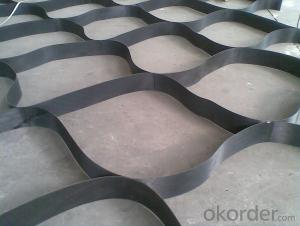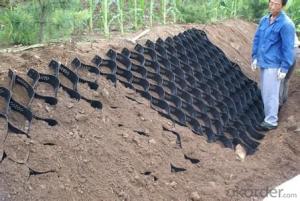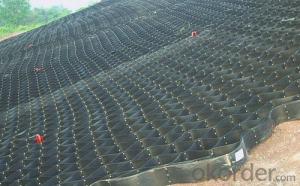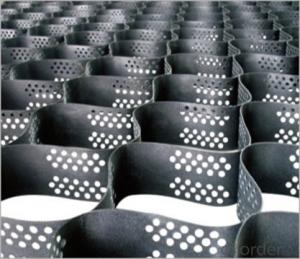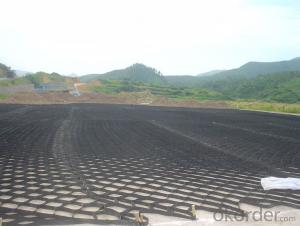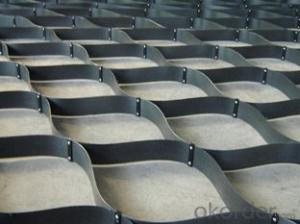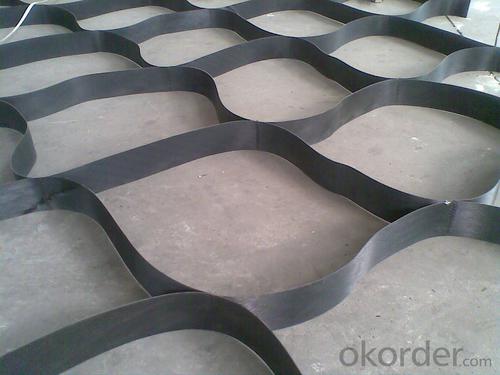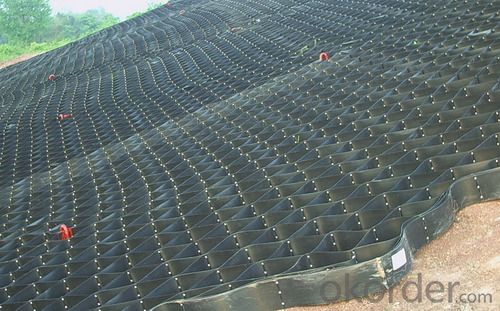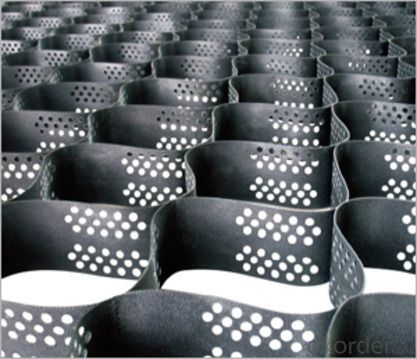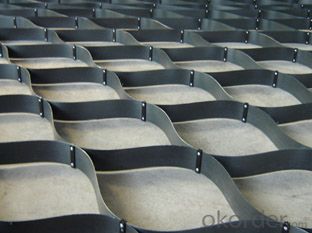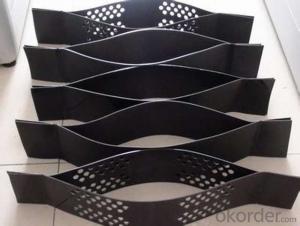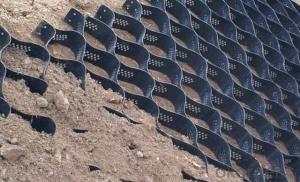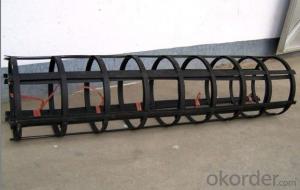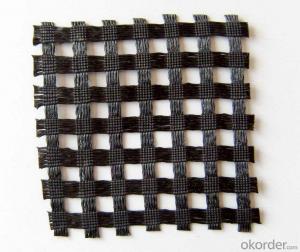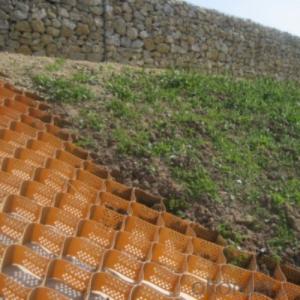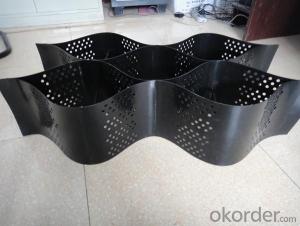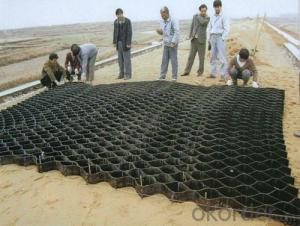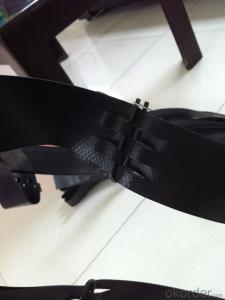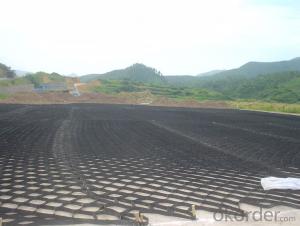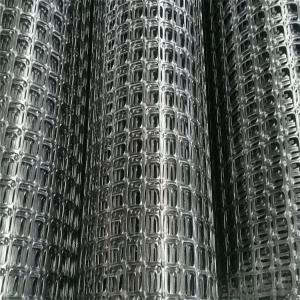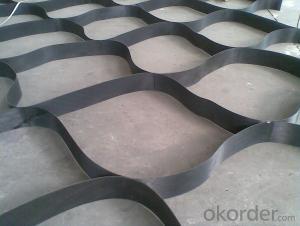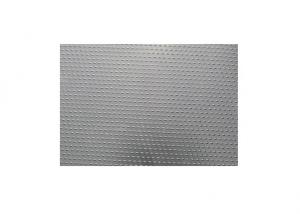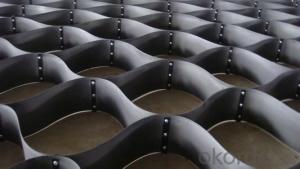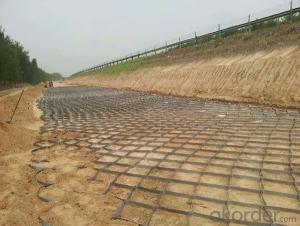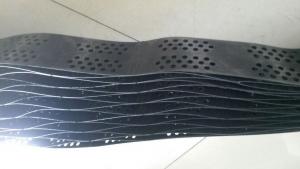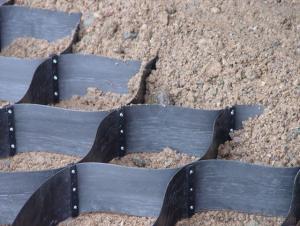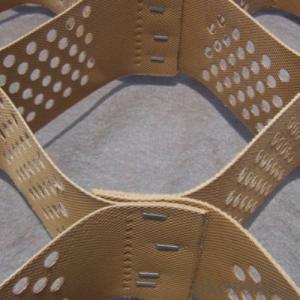Smooth Textured Perforated Plastic HDPE Cellular Confinement System of Geocells
- Loading Port:
- Qingdao
- Payment Terms:
- TT OR LC
- Min Order Qty:
- 10000 m²
- Supply Capability:
- 300000 m²/month
OKorder Service Pledge
OKorder Financial Service
You Might Also Like
Description Of Smooth Textured Perforated Plastic HDPE Geocell
HDPE Geocell is made of a new type of high strength geosynthetics, which is popular with both domestic and abroad, in accordance with GB/T 19274-2003 or ASTM D implementation of the standards, which welding the strengthened HDPE sheets by the high-power ultrasonic and forming to be a structure of three-dimensional reticular formation. Easily folded and convenient for transportation. When be in construction, the geocell can be pull into a network and launched into a three-dimensional honeycomb grid. As it filled in sol, macadam, concrete or other granular materials, constituted to be a construction which has strong sidewise restraint and high rate of stiffness.
Main Features of Smooth Textured Perforated Plastic HDPE Geocell
1),Light weight, wear-resistant, chemical stability, light oxidation aging, anti-acid/alkali corrosion, applied to different geological conditions, such as saline soil, desert, etc.
2),Wide temperature range, high tensile strength, good rigidity and toughness, good load capacity and anti-erosion ability.
3),Size is relatively stable, change the height and welding distance can meet the needs of different projects.
4),Retractile, easy to transport.
5),Easy to use, can use the local materials and achieve rapid construction, reduce construction costs.
6),Can be used repeatedly
Specifications of Smooth Textured Perforated Plastic HDPE Geocell
Sheet Thickness, mm | 1.2±0.1/1.7±0.1 | |||
Bonded Ranges,mm | 330±2.5~800±2.5 | |||
Cell Depth,mm | 50,75,100,100,150,200,250 | |||
Properties | Test Method | Value | ||
Material | HDPE | |||
Standard color | Black/Green | |||
Surface | Smooth/Textured | |||
Sheet Thickness, mm | ASTM D5199 | 1.2±0.1/1.7±0.1 | ||
Density, g/cm3 | ASTM D792 | >0.94 | ||
Carbon Black Content,% | ASTM D1603 | >2.0 | ||
Low Temperature Brittleness,C | ASTM D746 | <-77< span=""> | ||
Environment Stress Crack Resistance,hours | ASTM D1693 | >4000 | ||
Seam Peel Strength,N/100mm depth cell | COE GL-86-19 | 1000~1450 | ||
Seam Hang Strength,days | HKCTM | Per 100mm seam shall sustain 72.5kg weight for at least 7 days,undergoing the variances from room temperature to 53°C on one hour cycle | ||
Applications of Smooth Textured Perforated Plastic HDPE Geocell
1). To stable the roadbed of railway.
2). To stable the roadbed of highway.
3). To bear the load of dike or retaining wall.
4). To the imporement of shallow river way.
5). To support the pipeline and sewer.
6). For the prevention of landslide by using geocell as a heavy-duty hybrid force retaining wall.
7). To be used as independent wall, wharf and breakwater, etc.
8). For the desert, beaches and the riverbed, the river bank's regulation.
IMages of Smooth Textured Perforated Plastic HDPE Geocell
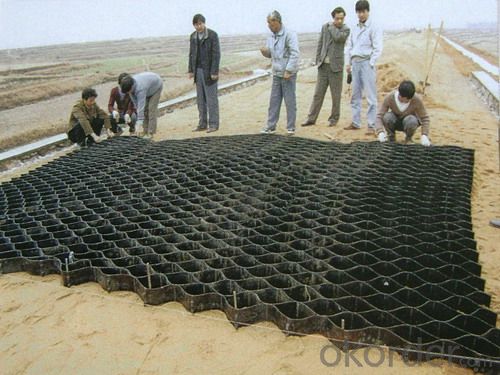
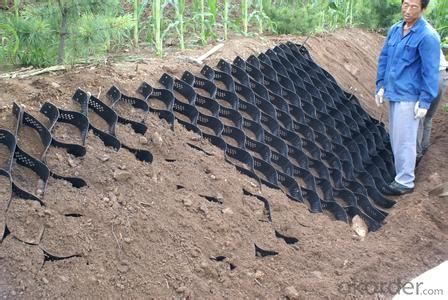

RFQ:
Q1:Can you provide a sample for us?
A:yes,we can provide for your free samples based on freight collect.
Q2:What is your MOQ?
A:MOQ is 10000sqm.
Q3:What is payment terms?
A:T/T,L/C
Q4:What is your lead time?
A:According to your order quantity,usually 7days for 1*40HC
Q5:Do the customized design accepted?
A:We welcome customized design.
- Q: How do geocells improve the stability of mechanically stabilized earth walls?
- Geocells improve the stability of mechanically stabilized earth walls by confining and reinforcing the backfill materials within the cells. This confinement prevents lateral spreading and enhances the overall stability of the wall. Additionally, the geocells provide increased load distribution, reducing the stresses on the wall and minimizing deformation.
- Q: How do geocells help with pavement rehabilitation?
- Geocells help with pavement rehabilitation by providing structural support and confinement to the base materials, preventing lateral spreading and increasing load-bearing capacity of the pavement. The cells act as a reinforcement system, distributing the load more effectively and reducing the potential for cracking, rutting, and other pavement distresses. Additionally, geocells enhance drainage and reduce water infiltration, improving the overall durability and longevity of the rehabilitated pavement.
- Q: Can geocells be used in hydraulic applications?
- Yes, geocells can be used in hydraulic applications. Geocells are three-dimensional cellular confinement systems that provide stability and reinforcement to soil, allowing for the construction of permeable structures. Their design promotes water drainage and prevents soil erosion, making them suitable for various hydraulic applications such as erosion control, shoreline protection, and stormwater management.
- Q: Can geocells be used in land reclamation projects?
- Yes, geocells can be used in land reclamation projects. Geocells are three-dimensional cellular confinement systems that provide stability and erosion control to soil. They can be used to reinforce and stabilize weak or loose soil in reclamation projects, preventing soil erosion and promoting vegetation growth. Additionally, geocells can be filled with different materials, such as sand or soil, to create a stable foundation for constructing infrastructure on reclaimed land.
- Q: Are geocells effective in preventing soil compaction?
- Yes, geocells are effective in preventing soil compaction. Geocells are cellular confinement systems made from high-density polyethylene (HDPE) that can be filled with soil or aggregate materials. When installed, they provide structural support and distribute loads evenly, reducing the pressure on the soil and preventing compaction. This helps to maintain the soil's permeability, stability, and overall health.
- Q: Can geocells be used for oil spill containment?
- Yes, geocells can be used for oil spill containment. Geocells are three-dimensional cellular confinement systems made from high-density polyethylene materials. These structures can be deployed to create temporary barriers or enclosures to contain and control oil spills, preventing the spread of oil and protecting sensitive areas. The geocells provide stability, durability, and flexibility, making them suitable for various terrains and environments.
- Q: Can geocells be used for golf course construction?
- Yes, geocells can be used for golf course construction. Geocells are a versatile and effective solution for soil stabilization and erosion control, which are crucial aspects of golf course construction. They provide structural support and stability to the course, helping with slope protection, retaining walls, and even creating artificial ponds. Additionally, geocells improve water drainage and prevent soil compaction, leading to healthier turf and better playing conditions on the golf course.
- Q: Can geocells be used for soil remediation?
- Yes, geocells can be used for soil remediation. Geocells are three-dimensional honeycomb-like structures made of high-density polyethylene (HDPE) that can be filled with various materials, including soil. They are commonly used for erosion control, slope stabilization, and soil reinforcement. In the case of soil remediation, geocells can be employed to contain and stabilize contaminated soil, preventing the spread of pollutants. Additionally, they can be used in conjunction with other remediation techniques, such as soil washing or bioremediation, to enhance the effectiveness of the remediation process.
- Q: What are the advantages of using geocells?
- There are several advantages of using geocells. Firstly, geocells provide excellent ground stabilization, improving the load-bearing capacity of soil. This is particularly useful in construction projects where weak or soft soil conditions exist. Secondly, geocells are easy to install and require minimal maintenance, reducing project costs and time. Thirdly, geocells can be filled with a variety of materials such as soil, sand, or gravel, making them versatile for different applications like erosion control, slope protection, and retaining walls. Finally, geocells promote environmental sustainability by reducing the need for excessive excavation and minimizing soil erosion, ultimately protecting the natural ecosystem.
- Q: What is the typical installation process for geocells?
- The typical installation process for geocells involves the following steps: 1. Site Preparation: The area where the geocells will be installed is cleared of any vegetation, debris, or obstacles. The ground is leveled and compacted to provide a stable base. 2. Geocell Layout: The geocells are laid out on the prepared surface according to the desired pattern or design. They are typically interlocked or connected using fasteners to ensure stability. 3. Filling: The geocells are filled with a suitable material such as soil, gravel, or aggregate. This filling material should be evenly distributed and compacted within the cells to provide structural support. 4. Compaction: Once the cells are filled, the material inside is compacted using appropriate compaction equipment to ensure proper density and stability. 5. Finishing: Any excess material is trimmed and leveled to achieve a smooth and uniform surface. Additional layers or finishes may be added depending on the intended use of the geocell installation. 6. Quality Control: The completed geocell installation is inspected to ensure that it meets the required specifications and standards. Overall, the installation process for geocells is relatively straightforward and can be completed with the help of experienced contractors or installation teams. It offers an efficient and cost-effective solution for various applications such as soil stabilization, erosion control, and load support.
Send your message to us
Smooth Textured Perforated Plastic HDPE Cellular Confinement System of Geocells
- Loading Port:
- Qingdao
- Payment Terms:
- TT OR LC
- Min Order Qty:
- 10000 m²
- Supply Capability:
- 300000 m²/month
OKorder Service Pledge
OKorder Financial Service
Similar products
Hot products
Hot Searches
Related keywords
